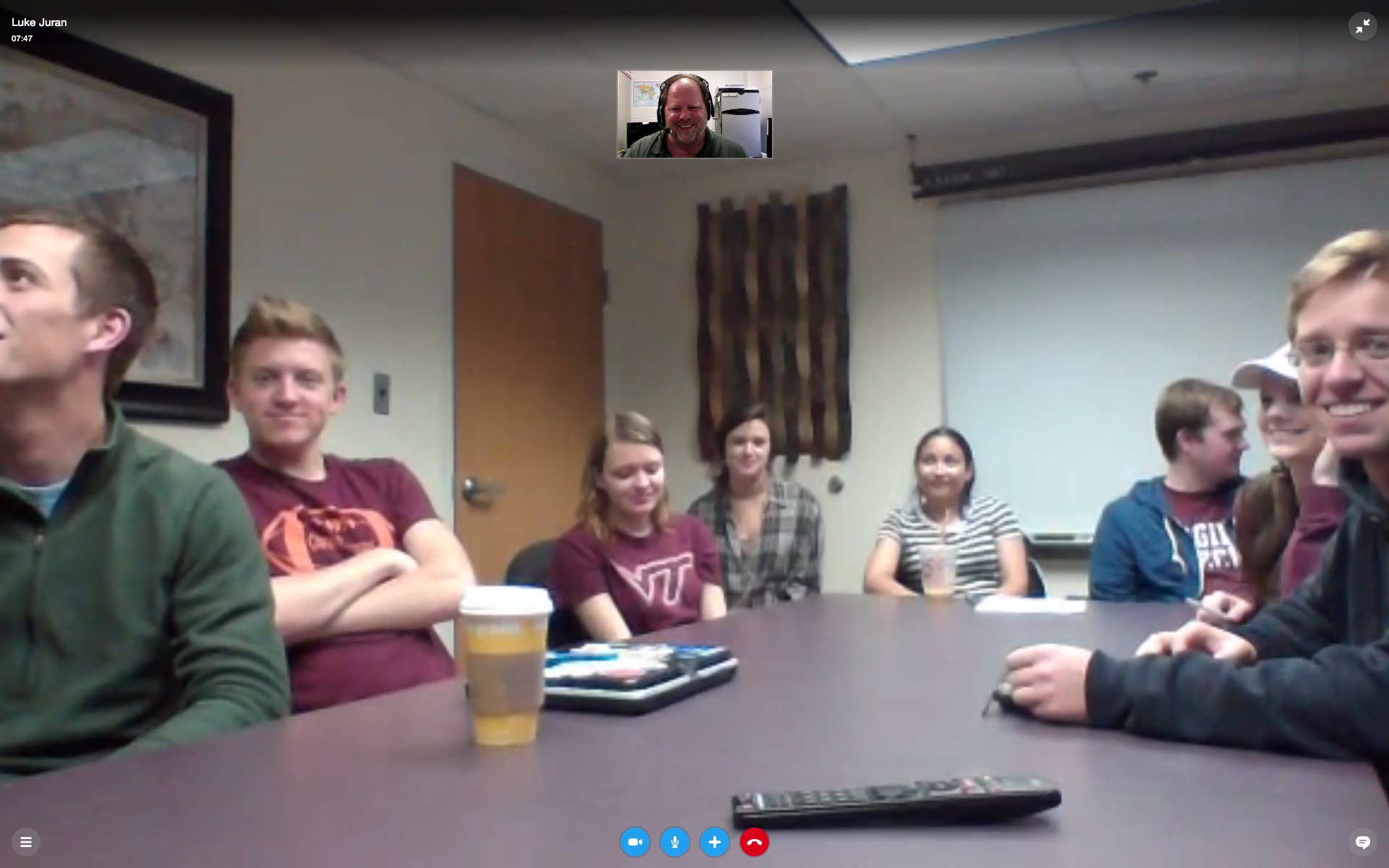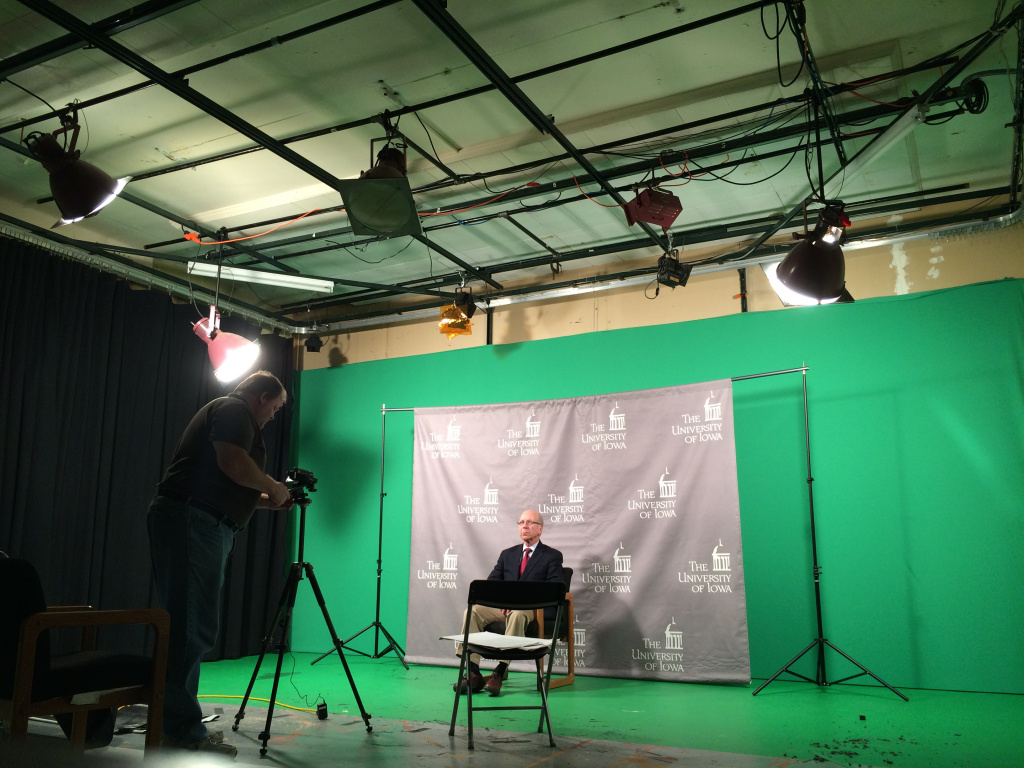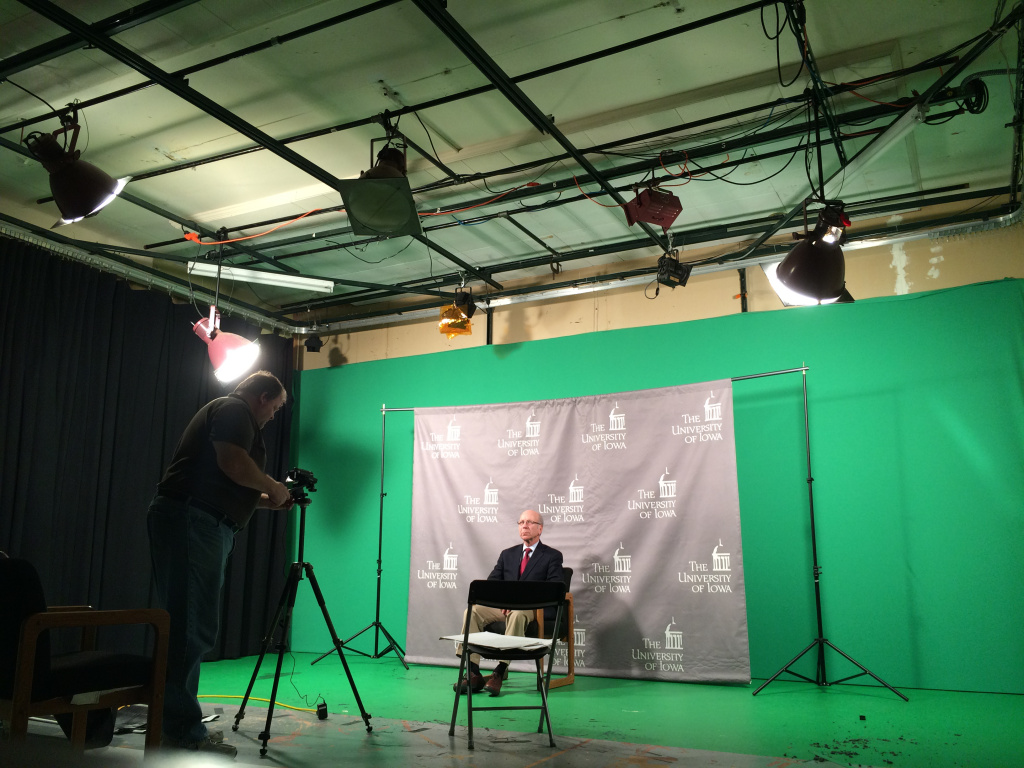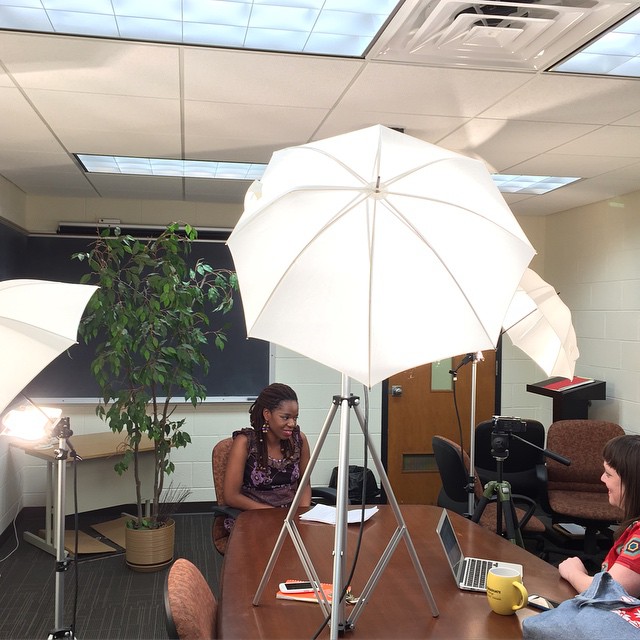Virginia Tech is utilizing distance education technologies to bring specialists into the classroom. On 14 April 2015, I had the opportunity to be a visiting guest for a sustainability course taught by Luke Juran. Using Skype I was able to present and interact with the students in the course. Below is a photo from our Skype session.
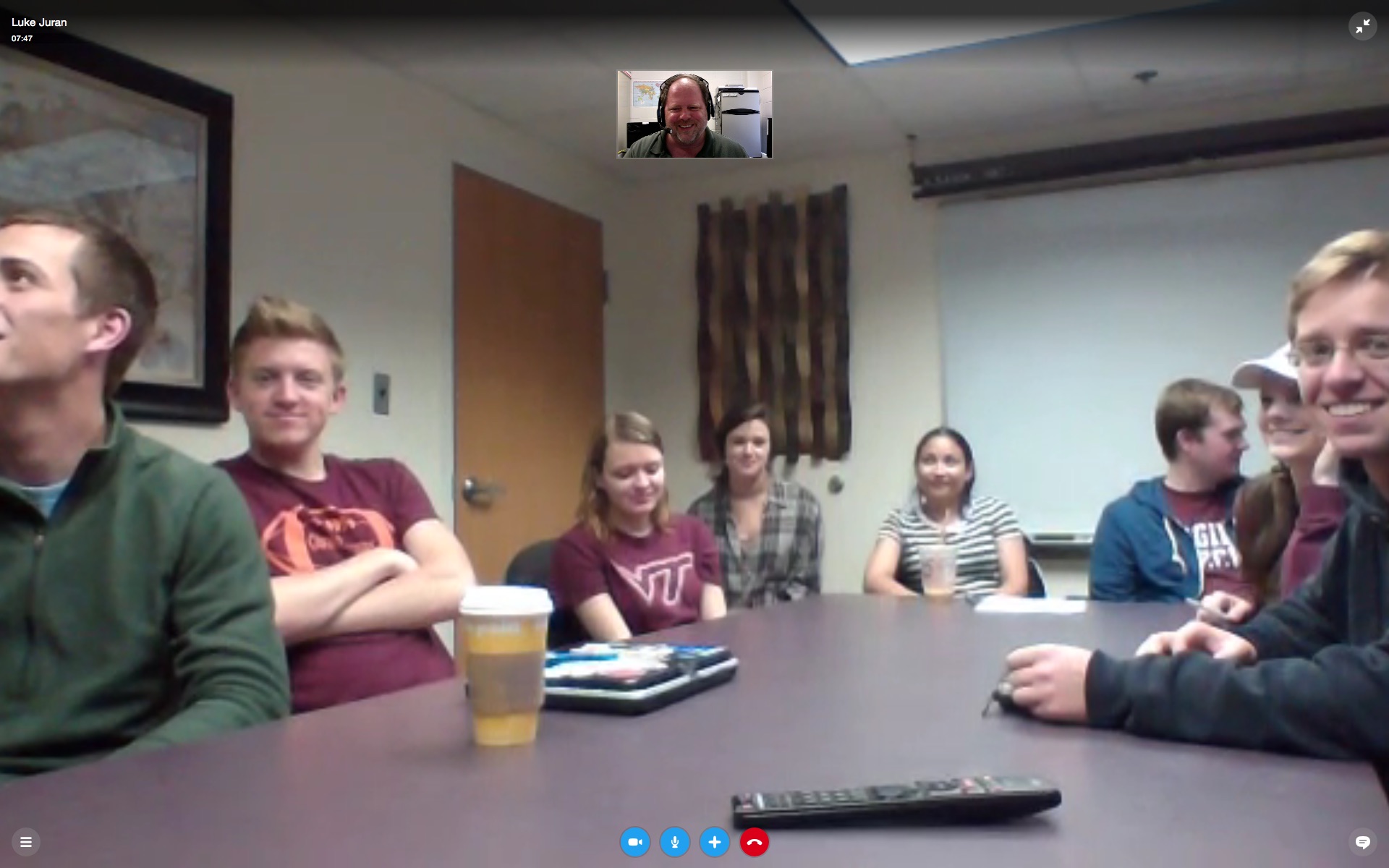
I’ve been inspired by the increased interest in tiny houses among students and faculty in higher education. Those focusing on sustainability and urban planning are incorporating smaller and more efficient living spaces into our built spaces. This tells me that we’re reaching a point of critical mass within the small house movement.
As a technology support specialist at the University of Iowa, I enjoy exploring how we can utilize technology for enhancing education. At the University of Iowa, through the Division of Continuing Education, courses are offered through Distance and Online Education.
Continuing education typically delivers certificates, degrees, and professional training to people with full-time jobs who do their studying in the evenings and weekends. In addition to schedule conflicts, people pursuing their career may find their ideal career location doesn’t put them close to the educational institution of their choice. So, distance education provides a great service.
In the past I assisted in teaching a course that utilized various classrooms on campus with multi-camera and multi-microphone systems to enhance the connection with an instructor in California.
More recently I had an opportunity to provide some technical support for a course being conducted by the University of Iowa, the University of Michigan, and Ohio State University. The course, Two Koreas: Political Economy and Regional Rivalry, had students on three campuses participating.
Combining the on-campus experience with efficiencies of distance and online technologies, creates the best of both worlds. The in-class experience gives students a chance to meet in person. The online component helps expand the campus to include a richer diversity of students and draw from a wider selection of faculty.

